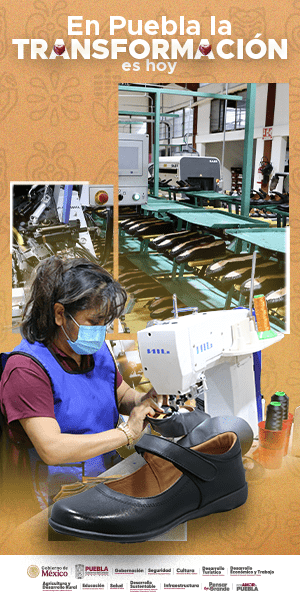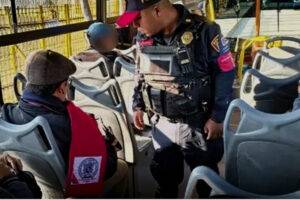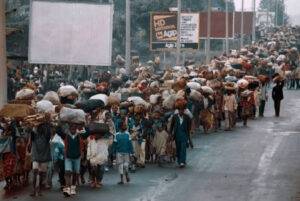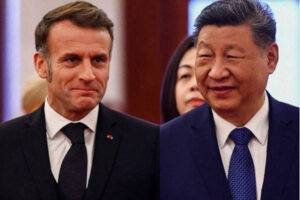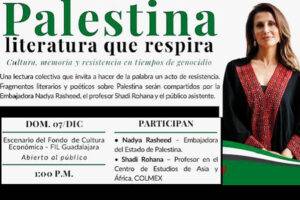By Charles McKelvey
Claudia Sheinbaum wins presidential elections in Mexico
Claudia Sheinbaum,1 of the coalition We Continue Making History, was elected President of Mexico on June 2, 2024. The coalition is formed by Morena (National Regeneration Movement), the Worker’s Party, and the Ecological Green of Mexico group. Claudia’s party, Morena, is the party of the current president of Mexico, Andrés Manuel López Obrador, widely known as AMLO, who is nearing the end of his six-year term with an approval rating in excess of 70%.
AMLO’s high approval is a consequence of the struggle of his government against poverty, the increase of pensions and salaries, and the strong growth of the GDP during the last three years, in the aftermath of the pandemic. During AMLO’s six-year term, nine million of Mexico’s 130 million inhabitants were lifted out of poverty, due to a 3.3% real growth in pensions and salaries.
In addition, AMLO did not comply with agreements between the previous government and transnational corporations. He filed a lawsuit against U.S. arms manufacturers, claiming that they are the driving force behind illegal arms trafficking and the drug trafficking cartels, a move that converted the issues of trafficking and foreign corporations into campaign issues in the Mexican presidential elections.
Sheinbaum received between 58.3% and 60.7% of the votes, according to the initial fast count of the National Electoral Institute, becoming the first woman to be elected president of Mexico. Her closest rival was Xóchitl Gálvez, who represented a conservative right-wing coalition formed by the Institutional Revolutionary Party, which long ruled Mexico, and the parties of National Action and Democratic Revolution. Gálvez received between 26.6% and 28.6% of the vote. The social democrat Jorge Álvarez, of the Citizen Movement, finished third with between 9.9 and 10.8 percent of the vote. The voter turnout was between 60 and 61.5 percent of registered voters.
In her campaign, Claudia promised to give continuity to the project of AMLO, which he has called the fourth transformation of Mexico. She declared that Mexico during her presidency will construct “the second floor of the fourth transformation.” She has promised to maintain fiscal and financial discipline, current prices of fuel and electricity, various programs of social wellbeing initiated by AMLO, and large infrastructure projects undertaken by AMLO in railways, roads, ports, airports, and renewable energy. Her government will maintain the necessary separation between economic power and political power, implying the stimulation of private investment in strategic areas rather than nationalization.
In her speech following the announcement of the election results, Claudia declared that her government will facilitate private national and foreign investment toward increasing social wellbeing and national economic development, while ensuring respect for the environment. She views access to food, health, housing, and culture as rights that are necessary for true wellbeing.
She asserted that her government will continue the consolidation of the National Guard with attention to public security. She seeks to coordinate the institutions of the different powers and levels of the government in order to create zero impunity for crime and violence. Her approach to crime and violence includes expanding opportunities by developing the economy and reducing poverty.
With respect to foreign policy, Sheinbaum asserted that her government will continue AMLO’s policy based in the principles of non-intervention, international cooperation in the pursuit of common development, the self-determination of peoples, and the construction of peace. This includes a relation with the United States based on friendship and mutual respect.
She further noted that her government will not be authoritarian; it will guarantee freedom of speech, press, and assembly. It will respect political, social, cultural, and religious liberty and gender and sexual diversity.
§First transformation: Independence
The first transformation refers to the War of Independence from Spanish colonialism, which was initiated in 1810 and concluded in 1821. The independence movement was led by Miguel Hidalgo and José María Morelos. It succeeded in breaking colonial subjugation by Spain, which had endured for 300 years; and it marked the first steps toward the abolition of slavery.
§Second transformation: Liberal Reform
López Obrador speaks of the War of Reform, a period of transformation between 1858 and 1861 led by President Benito Juárez, whom AMLO has described as "the best president in all of history." AMLO maintains that the Reform Laws sought to separate the Church from the State, and they led to the formation of a national State based on constitutional order.
According to the classic work on the Mexican Revolution by the Argentinian intellectual Adolfo Gilly,2 the liberal reform that began in Mexico in 1855 was pushed by an emerging urban commercial bourgeoisie that sought to expand the domestic market through the creation of a class of agrarian smallholders, taking land from the Church and the indigenous communities. But in spite of the intentions of the urban commercial bourgeoisie, the redistributed land became concentrated.
The inability of the urban commercial bourgeoisie to create a class of smallholders, which would have strengthened the domestic market, resulted in the limited expansion of industry. There was some development in light industry under Mexican ownership, such as the food and drink industry. There also was some development of textile and steel industries, through a combination of foreign investment and Mexican capital. But Mexican capital was primarily concentrated in the rural estate bourgeoisie (Gilly 2005:25-26).
§The third transformation: Revolution
AMLO identifies the Mexican Revolution as the third transformation, involving a struggle of more than thirty years against the dictatorship of Porfirio Díaz. The Revolution culminated in the Constitution of 1917, which is currently in force in the country.
According to Adolfo Gilly, from 1876 to 1911, the massive and violent seizing of land from peasants and indigenous communities was central to the policy of the dictator Porfirio Díaz, who ruled Mexico during the period. The confiscations led to the modern hacienda, which produced sugar, livestock, cotton, henequen, and coffee for the expanding world market, thus having an economic structure fundamentally different from the colonial multi-purpose hacienda, in which production had a more local orientation. The acquisitions of land for the modern haciendas dislodged peasants from their means of sustenance (Gilly 2005:2-4, 12-19).
Thus, although Mexico in the Porfirian era was ruled by both large landowners and industrialists, the former were far more powerful (Gilly 2005:38, 41, 93). The elite classes shared a common interest in protecting their privileged position above the popular classes, but there were conflicts of interest between the two sectors. The aggressive acquisition of land by the large landholders undermined the intention of the urban commercial bourgeoisie to create a class of agrarian smallholders, which would have provided a social base for industrial expansion. This provided the social foundation for reformist opposition to the Porfirian political-economic system among the bourgeoisie. Although the bourgeois opposition stimulated the peasant revolution in 1910, bourgeois interests were fundamentally opposed to those of peasants, and the reformist bourgeoisie made various efforts to end, constrain, and direct the peasant revolution.
In addition, the inadequate social base for a domestic market limited the possibilities for the petit bourgeoisie, giving rise to reformism as well as revolutionary and Jacobin currents in said class (Gilly 2005:41, 99). But the revolutionary sector of the petit bourgeoisie was idealist; it was not sufficiently advanced in its understanding to be able to lead an alliance of peasants and workers in the taking of power by the popular sectors.
Therefore, the Porfirian era of 1876 to 1911 was opposed to the long-range interests of the urban bourgeoisie and the petit bourgeoisie, but it was above all an attack on the peasantry and the indigenous villages. As a result, the Porfirian hacienda became the object of peasant revolutionary fury in 1910, such that in popular oral tradition, the revolution is treated as a series of hacienda seizures (Gilly 2005:17). In the Mexican Revolution, the peasants would form the unwavering revolutionary force driving events, although the peasants did not possess a social base necessary for understanding how to consolidate power at the national level.
The revolution began in 1910. Francisco Madero, a member of a rich family of landowners and industrialists, was a political reformer who called for free elections and a single-term presidency. When Porfirio Díaz rigged the elections of June 1910 to have himself reelected, Madero, the opposition candidate, declared the election results null and void and proclaimed himself interim president. He issued a call to arms; and he called for the restoration of expropriated land to their original owners, most of whom were indigenous peasants (Gilly 2005:54-55).
Madero’s call stimulated peasant uprisings throughout the country, including the formation of small peasant armed units that attacked the federal army; and it included the armed appropriation of haciendas by peasants. Two important peasant leaders who emerged were Pancho Villa, who led peasant armed units in the northern state of Chihuahua; and Emiliano Zapata, who led seizures of haciendas in the southern state of Morelos.
Madero, however, made an agreement with Porfirio Díaz in May 1911, which stipulated the resignation of Porfirio, the organization of general elections, and a cease-fire between governmental and revolutionary forces. Inasmuch as the accord made no mention of the land question, the seizure of haciendas by armed peasants continued. Whereas the bourgeois opposition considered the uprising to be over, for the peasants the revolution would proceed.
From 1911 to 1914, armies led by Villa and Zapata advanced and took control of the northern and central regions of the country. On October 10, 1914, military officers from three of the four revolutionary armies, not including the army of Zapata, held a convention in Aguascalientes. They declared themselves to be the governing body of the nation, and they named General Eulalio Gutiérrez, who could count on the support of peasant leaders, as President of the Republic. In addition, the Convention issued a declaration that called for: the restoration of communal land to indigenous villages; the elimination of large haciendas and the redistribution of land to the people; and the nationalization of property belonging to enemies of the revolution. Although the convention consisted almost entirely of petit bourgeois military officers, it was dominated by officers sympathetic to peasant goals or prepared to make concessions to peasant interests at a time when the peasant force was at its height. Thus, by October 1914 peasant interests dominated the rhetoric of the newly declared revolutionary government (Gilly 2005:127-146).
By early December, the peasant armies of Zapata and Villa occupied Mexico City. In a historic meeting of December 4, Villa and Zapata agreed that the government should be turned over to the “educated people,” who would be entrusted to govern in accordance with the needs of the people (Gilly 2005:155). The peasant armies of Zapata and Villa soon abandoned the capital city.
Thus, the peasant leaders did not take the power that was in their hands in December 2014. They turned power over to the petit bourgeois leaders of the Conventionist government. They were misled by the fact that the convention had declared its support for peasant goals in October, at a moment in which the peasant surge was at its height. But in reality, the Conventionist government consisted of various contradictory petit bourgeois and bourgeois currents, and therefore it was not in a position to protect peasant interests in the long term. Even the radical sector did not have an understanding of how to restructure government and its bureaucracy to serve the interests of the people. In order to guarantee the long-term protection of peasant interests, it would have been necessary for the peasant leaders to take the power that was in their hands.
Gilly maintains that the peasant leaders were not in a position to take power, because they did not have a national plan, program, or political party. The peasant program was a rural program, with a focus on the redistribution of land and the formation of local alternative governmental structures in the countryside. The peasant leaders were not able to propose a plan for the development of the nation, which would take into account the needs of the cities, urban workers, and industrial workers as well as national needs in the face of the imperialist intentions of the world powers (Gilly 2005:148).
At the same time, a rival revolutionary army known as the Constitutionalist Army had been established by Venustiano Carranza, a big landholder who represented a bourgeois tendency that saw the making of concessions to the peasants as the only way to contain the peasant revolution. Carranza’s provisional government had the support of many peasants and the radical wing of the nationalist petit bourgeoisie, because of its proposal for the cancellation of peasant debts. But it did not attain the ultimate support of Zapata and Villa, because its proposed measures did not include agrarian reform and land redistribution. The principal leaders of the Carranza political/military force were petit bourgeois military officers who sought individual upward mobility.
The Carranza army, led by Alvaro Obregón, entered Mexico City in January 2015, following the abandonment of the capital city by the peasant armies of Zapata and Villa. Seeking to undermine support for Villa and Zapata, the Carranza government sought to forge from above a peasant-worker alliance. Its agrarian reform law of January 6, 1915, declared null and void the appropriation of land during the liberal and Porfirian eras, and it decreed the distribution of land to small private owners. In practice, the land was appropriated from the old Porfirian oligarchy and distributed to a new bourgeoisie being formed by Constitutionalist petit bourgeois generals seeking upward mobility, with the result that land distribution remained equally concentrated. The proclamation of the distribution of land to small private owners, although not carried out in practice, was effective in attracting the support of a sector of the peasantry, and it therefore undermined support for Villa (Gilly 2005:146-47, 162-64, 183-87).
The Carranza 1915 agrarian reform law also had the effect of confining the influence of Zapata to the state of Morelos, where land distribution to peasants was carried out in practice. This regional implementation of peasant goals was soon brought to an end. With the threat of Villa in the North reduced, military operations by the Constitutionalist Army against the Zapatists in Morelos were undertaken in 1916 and were culminated successfully in 1919 (Gilly 2005:186, 251-53, 261-67, 284-88).
The forging of a peasant-worker alliance from above also included the adoption of social measures designed to attain support among workers, artisans, and the urban poor. Following the occupation of Mexico City in January 1915, Obregón adopted various measures to attend to the material needs of the city’s poor, such as establishing relief stations for the distribution of necessities in short supply and imposing taxes on the wealthy and the Church in order to finance the program. In February, when the Mexican Telephone and Telegraph Company refused to accept demands of striking workers, the government placed the company under the management of the workers. At the same time, an agreement was made with workers’ unions, in which the government agreed to improve workers’ conditions, and the unions agreed to form “Red Battalions” to be enlisted in the war against Villa, who now was portrayed as a reactionary. The Red Battalions played an important role in the successful military campaign against Villa’s peasant army in the North in 1915. But beginning in December 1915, when Villa’s forces were reduced to a regional guerrilla threat, the Red Battalions were disbanded, and union leaders were arrested (Gilly 2005:174-75, 188-92, 216-22).
Thus, the peasant-worker alliance from above was based on temporary concessions to peasants and workers rather than full long-term implementation of policies designed to address the needs of the people, and it was accompanied by repression directed against uncooperative union leaders. And it was based on efforts to isolate and end the more radical expressions of the peasant revolution, represented by Zapata and Villa. There were leaders among the workers who opposed this alliance with the ascending petit bourgeoisie, but they were unable to formulate an alternative strategy of a worker-peasant alliance forged from below. Neither was the peasant leadership able to formulate a national plan that included the needs of urban workers as the basis for a peasant-worker alliance forged from below.
The Constitutional Congress of Querétaro was convened on November 21, 1916, and approved a new constitution on January 31, 1917. Consisting of representatives of the various petit bourgeois tendencies of the Constitutionalist Army and government, the Congress was not very representative of the people. But in the debates, the radical tendency was dominant, thus favoring the promise of concessions to peasants and workers. As a result, the Mexican Constitution was the most advanced in the world. The Constitution declared: the liquidation of large-scale holdings and the redistribution of lands to the peasantry; the restoration of village communal lands; the nationalization of mineral and oil wealth; the limitation of the rights of private property on the basis of social need; an eight-hour workday; a minimum wage; a ban on the employment of children; the protection of women from dangerous or unhealthy work; equal pay for equal work, with no distinction of sex or nationality; and the right to strike and to form labor unions (Gilly 2005: 231-38).
The social and agrarian reforms declared by the Querétaro Constitution functioned to increase the popular legitimacy of the government and contributed to social stability. But the Constitution was not implemented. “The democratic clauses of the Constitution would largely remain a dead letter for subsequent governments, while its social clauses only received application insofar as popular organizations created a favorable relationship of forces.” Only with the government of Lázaro Cárdenas of 1934 to 1940 would the social and agrarian clauses of the Constitution be implemented (Gilly 2005: 238-39, 267).
From 1917 to 1920, Carranza increasingly sought to forge an alliance with the old Porfirian landowning class, from which he himself originated. This led to opposition from the radical current among the petit bourgeois military officers, culminating in the fall and assassination of Carranza in 1920. Alvaro Obregón, who had consistently represented the more progressive forces within the Carranza movement, launched a presidential campaign in 1919 in opposition to Carranza, and he made new agreements with labor leaders and with a sector of the Zapatist leadership. The transition from Carranza to Obregón represented a change from a policy of stifling the masses through repression to containment of the masses through more significant concessions, but concessions that nonetheless did not jeopardize the property interests of the new bourgeoisie. It represented the consolidation of the peasant-worker alliance forged from above and the consolidation of a new class system ruled by a new bourgeoisie (Gilly 2005:312-26).
Adolfo Gilly describes the manner in which petit bourgeois military officers of the revolutionary army were able to acquire land. The agrarian reform law of January 6, 1915, mandated the restoration of land unjustly appropriated during the regime of Porfirio Díaz. Gilly notes that the law stipulated that all claims for the restitution of land should be addressed, not to the elected village officials as was being done in Zapatist controlled areas in Morelos, but to the governors of each state. In addition, the law permitted claimants to address “senior officials specially authorized by the Executive Power.” This centralization of the decision-making process in the executive branches of the state and federal governments “was the foothold for a huge land-seizure operation conducted by Constitutionalist generals, senior officers, functionaries, and politicians. The most direct beneficiaries of the ‘agrarian reform,’ they would enrich themselves with a voracity comparable to that of the bourgeoisie in the great French Revolution,” constituting a landholding nouveaux rich that came to be known as the “revolutionary bourgeoisie” (Gilly 2005:187, 333).
Gilly further writes: The officers of Carranza’s army had enriched themselves by buying up the best lands of the old Porfirian oligarchy at knockdown prices, while the agrarian redistribution for which the peasants had fought the revolution barely went further than the parchment of the Constitution. Under Obregón, this system of capitalist class formation reached quite scandalous proportions, and state-organized plunder became a veritable national institution through such forms as economic concessions, handouts, public contracts, and even more brazen diversion of public funds. The postrevolutionary bourgeoisie developed through this peculiar system of ‘primitive accumulation’ . . . then invested its gain in banking, industrial, and commercial concerns and went on enriching itself by the normal mechanism of capital accumulation. Forces newly attached to the state political apparatus then took their turn to become capitalists through the plunder of state funds (2005:325).
In contrast, from 1913 to 1917, the peasants of Morelos, led by Emiliano Zapata, established an alternative political-economic system, which Adolfo Gilly calls the “Morelos Commune.” The Zapatist revolution appropriated, without compensation, the large haciendas and the sugar mills in the state of Morelos. Agrarian commissions “handed over all the land to the villages, nationalized the sugar mills, and effectively eliminated the capitalist and landowning class. All the capitalists and big landowners living in the state fled abroad or to the capital.” The nationalized sugar mills were managed by the workers, proving “that the industry could go on functioning perfectly well without the bosses” (Gilly 2005:241, 245-46, 289-90).
In villages under Zapatist control, structures of self-government were established. The men in each village met each month to discuss and decide on issues that they considered important, and they elected delegates who served in a municipal assembly, which in turn elected delegates to represent them at the district level. Alongside these structures of village self-government, the villages formed associations that created primary schools for children and night schools for adults and that functioned as committees to address everyday problems (Gilly 2005:268-72, 290-92). With reference to these popular associations, Gilly writes: “As each village association gained experience, it assumed many tasks: to read and explain declarations from the revolutionary headquarters; to settle disputes between villagers; and to arrange talks by revolutionary lecturers. In short, it operated as a true peasant committee for all the political matters and everyday problems of peasant life” (2005:271).
As noted above, the Zapatist project in Morelos was ended through military force applied by the Carranza government in the period 1916 to 1919.
The Mexican Revolution, therefore, can be understood as a frustrated peasant revolution. From 1910 to 1920, the peasants of Mexico forced their way into history. But the peasants did not arrive to power. Instead, an ascending sector of the petit bourgeoisie, concentrated among the officers of the Revolutionary Constitutionalist Army, was able to take advantage of the changes provoked by the peasant revolution to seize land and to constitute themselves as a new elite in a new political-economic system, characterized by revolutionary rhetoric and modest concessions to working class demands.
The Mexican Revolution was, in the words of Adolfo Gilly, an interrupted revolution.
§What does the fourth transformation propose?
The fourth transformation, as proposed by AMLO, involves strengthening national productivity, seeking to produce on Mexican land what is necessary for consumption. This will create a strengthening of the internal market, and it will create a situation in which Mexicans are happy living and working in the land of their birth, with its customs and traditions; when someone migrates, it is done out of free will and not due to necessity.
The fourth transformation involves combatting inequality and poverty, which are the root causes of violence. Peace and tranquility, AMLO declares, are the fruits of justice. The cartels of drugs and violence must be confronted by combatting inequality and poverty. On this foundation, the government can function with order and professionalism, operating through reason and law.
With respect to foreign policy, AMLO sought to return Mexican policy to the principles of non-intervention and the peaceful self-determination of peoples.
In a speech in 2022, President López Obrador explained the political, economic and social principles that inspire the fourth transformation: special attention to indigenous peoples; ending corruption and privileges; political freedom and electoral democracy; social justice based on popular needs; equitable distribution of income and wealth; reduction of poverty; the creation of conditions that enable people to live happily, free from misery and fear; the attainment of a better life, more just, egalitarian and fraternal; social programs in favor of the disadvantaged population; and the recovery of the role of the State in the stewardship of the economy and society.
§Final considerations
The fourth transformation proclaimed by AMLO and Claudia is the culmination of the Mexican struggle for independence from Spanish colonial rule and for the liberalization and modernization of the economy in the nineteenth century as well as the aspirations of the unfinished peasant revolution of the early twentieth century. It seeks to improve the productivity of the economy through strong state action that mobilizes private and public resources, and to channel distribution toward the needs of the people. It is in tune with the worldwide anti-imperialist construction of a more just international economic order, unfolding in the present historic moment. It is viewed with hope and solidarity from the global South.
https://charlesmckelvey.substack.com/p/the-fourth-transformation-in-mexico

